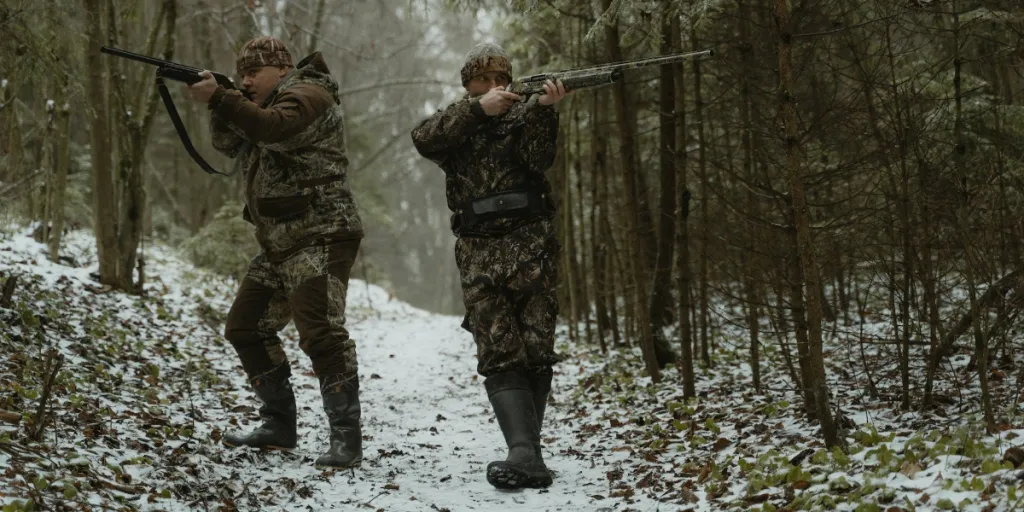Rapid urbanization, increasing participation by millennials, and a growing preference for outdoor recreational activities are expected to boost the revenue growth of global hunting equipment.
Hunting is a popular pastime in the United States for sport or food.
According to Firearm Industry Trade Association (NSSF), hunting increased during the pandemic, as the lockdowns gave people much time to hunt.
Times have changed, and more people are inclined to hunt more in the future. Before exploring the six hunting equipment trends, here is a quick overview of the hunting equipment industry.
Table of Contents
Hunting equipment market
6 exclusive hunting equipment trends
The future of hunting
Hunting equipment market
The global hunting equipment market is valued at US$ 23.21 billion. It is expected to grow at a compound annual growth rate (CAGR) of 1.47% from 2023 to 2027. The technological advances in the hunting equipment market are likely to propel the market to new heights.
Hunting equipment refers to any gun, weapon, apparatus, implement, or material used to kill, hunt, and capture wildlife.
A rise in online sales is driving the growth of hunting equipment and accessories. North America is the largest market for hunting equipment due to the popularity of hunting as a sport.
6 exclusive hunting equipment trends
High-tech hunting clothing
High-tech hunting clothes are becoming increasingly popular among hunters. These clothes are designed with advanced materials and technology to provide better camouflage, protection, and comfort.
Some of the features found in high-tech hunting clothing include:
– Breathability: High-tech hunting clothing allows efficient air circulation to keep hunters comfortable and dry during long hunting sessions.
– Waterproofing: Advanced technology is used in high-tech hunting clothing to keep hunters dry even in wet conditions.
– Scent control: Special fabrics and technologies minimize and eliminate odors that could alert animals to the presence of hunters.
Crossbows
Crossbows are rapidly gaining popularity among hunters due to their ease of use, accuracy, and power. Many hunters are now switching from traditional archery equipment to crossbows due to physical limitations, as crossbows require less strength to draw and hold steady.
When selecting a crossbow for hunting, there are several factors to consider, including:
– Draw weight: A crossbow’s draw weight refers to the force required to draw the string back to its firing position.
– Speed: A crossbow’s speed refers to the bolt’s velocity (arrow) as it leaves the bow.
– Noise level: Crossbows can produce a significant amount of noise when fired, alerting animals and reducing the chances of a successful hunt.
Trail cameras
Trail cameras are an essential tool for modern hunters. These cameras monitor animal activity and provide valuable information about their habits and movement patterns.
When selecting a trail camera for hunting, there are several factors to consider, including:
– Image quality: The camera’s image quality determines how clear and detailed the images or videos will be.
– Trigger speed: The trigger speed refers to how quickly the camera takes a picture after it is triggered by movement or heat.
– Battery life: The camera’s battery life determines how long it can be left in the field before needing replacing or recharging.
Range finders
Range finders measure the distance between the hunter and the target. These devices help hunters to accurately aim and shoot at their prey, increasing their chances of success.
There are several types of range finders available on the market, including:
– Laser range finders: These range finders use a laser beam to calculate the distance between the hunter and the target. They are highly accurate and can provide readings up to several hundred yards.
– Infrared range finders: These range finders use infrared technology to calculate the distance. They work well in low-light conditions and can be used to hunt at night.
– GPS range finders: These range finders use GPS technology to calculate the distance between the hunter and the target. They are highly accurate but can be affected by weather conditions.
– Optical range finders: These range finders use lenses to calculate the distance. They are less accurate than other range finders but are often more affordable.
Electronic game calls
Electronic game calls are becoming increasingly popular among hunters who want to attract animals. These devices mimic the sounds of different animals, such as deer, elk, or turkeys.
Many models allow hunters to program and store various calls, while others come pre-loaded with standard calls.
When choosing an electronic game call, it is essential to consider factors such as battery life, durability, and the available types of calls. Selecting a model suitable for your target game species is also important, as different calls are more effective for certain game types.
Hunting drones
Hunting drones are still in their early stages but rapidly gaining popularity among hunters. These drones are equipped with cameras and other sensors that allow hunters to locate and track animals from the air, providing a new perspective on the hunt.
Suppose you decide to use a hunting drone. In that case, it is essential to choose a model explicitly designed for hunting, with features such as long battery life, stable flight, and high-quality cameras.
It’s also important to operate the drone responsibly and with consideration for the safety of other hunters.
The future of hunting
Even though the Internet and technology have been the source of fear for many, those who embrace change will make their hunting more fulfilling.
Overall, the future of hunting equipment is likely to be shaped by advancements in technology and a continued commitment to safety and responsible hunting practices.
In 2023 and beyond, businesses should embrace these hunting equipment trends to capitalize on their increased demand.




